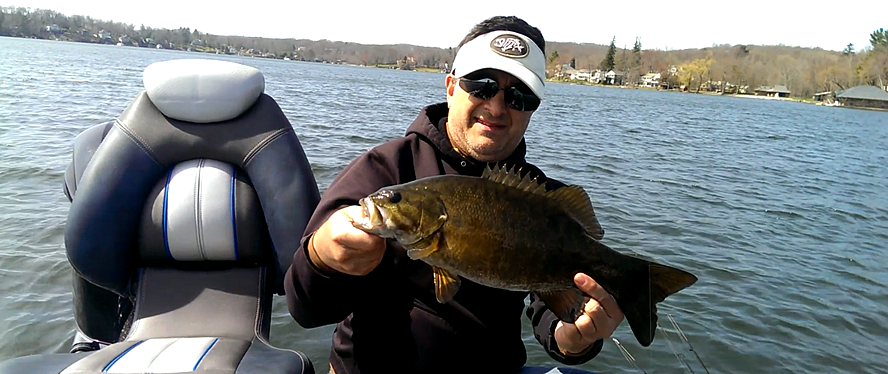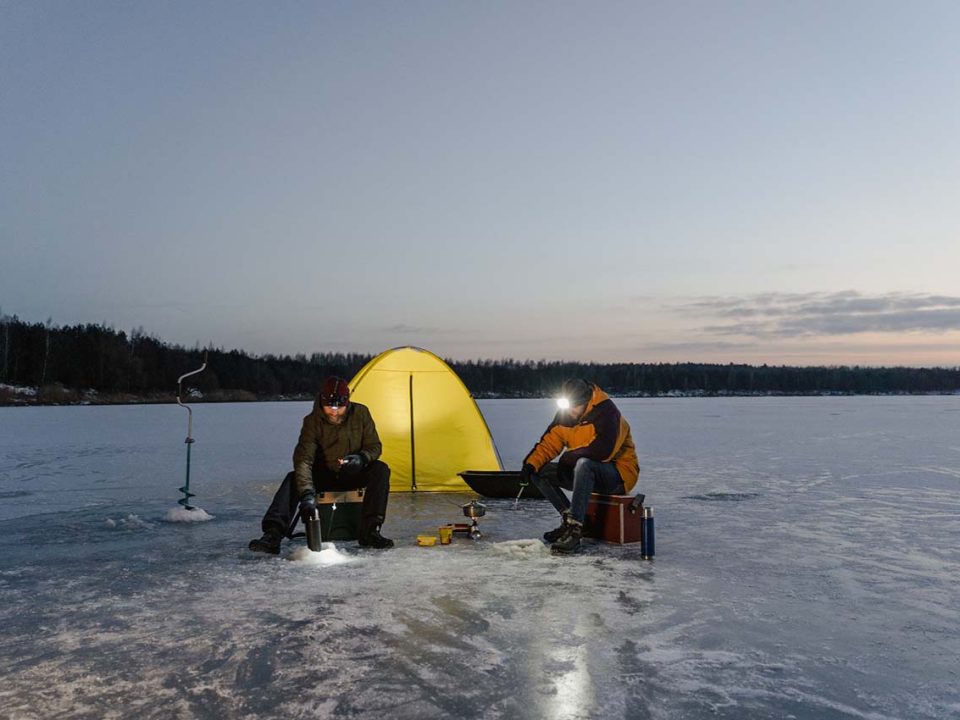
So what is a ditch and how do I find them? Ditches to put it simply are depressions in the bottom. Some people also call them a “hole”. Ditches can be natural, or created by water entering a body of water. For example, if you have a creek that pours into a lake, there will be a ditch near the mouth of the creek. These ditches are created from erosion due to current. You can find ditches in other areas as well. They can be found on flats, humps, and even points.
How do you go about finding ditches? One way is if you are lucky enough to have a really detailed contour map of the lake. You want to look for areas that are relatively flat (showing the same average depth), but there will be an area that outlines a shape (usually circular or oval-shaped) and these contour lines will show a greater depth than the surrounding area. Something to think about… everyone who has the same lake map as you can also find these so they are usually heavily pressured.
 Even with a map, ditches are not easy to find, as map data is only so accurate. In the end, you will always find yourself driving around these areas staring at your electronics and waiting for the depth to drop on a flat. Then you must drop a marker buoy (or hit a weigh point on your GPS if you have one) and begin exploring the area to confirm that the depth change you found, in fact, is a ditch. Remember that a ditch is basically the reverse of a hump. So you need to find the edges to confirm that it is a ditch. To give you a better mental picture, think of a “pot hole” in the road. That is what you are looking for. Some ditches maybe the size of a car, others could be the size of a football field. On manmade impoundments, it could literally be a “drainage ditch” which runs alongside a roadbed.
Even with a map, ditches are not easy to find, as map data is only so accurate. In the end, you will always find yourself driving around these areas staring at your electronics and waiting for the depth to drop on a flat. Then you must drop a marker buoy (or hit a weigh point on your GPS if you have one) and begin exploring the area to confirm that the depth change you found, in fact, is a ditch. Remember that a ditch is basically the reverse of a hump. So you need to find the edges to confirm that it is a ditch. To give you a better mental picture, think of a “pot hole” in the road. That is what you are looking for. Some ditches maybe the size of a car, others could be the size of a football field. On manmade impoundments, it could literally be a “drainage ditch” which runs alongside a roadbed.
I recently purchased a Humminbird Onix 8 NT with side imaging. This unit makes finding ditches MUCH easier, as it allows you to see a picture of the bottom over 250 feet off each side of the boat at the same time. So in one pass, you can see over 500 feet of the bottom. These units are not cheap, but when you think about the advantage that it can give you, it is something to consider.

What makes one ditch better than another? Like any other structure, the more irregular features you have the more likely they are to hold fish. Ditches that have weeds, rock, submerged timber, notches, close proximity to a roadbed, etc. will typically attract more fish than those which are barren. Have you ever heard the saying ‘find the spot on a spot”? With ditches, it is the same. A ditch the size of a football field may only be productive in one small area the size of a car. This is usually caused by something different, like an additional structural element or an additional piece of cover like some brush piles or weeds, shell beds or rock. When you examine a ditch with your electronics, you want to search around for these types of irregular features. Most times that is where you will also mark baitfish and in turn bass.
So now what lures should you use and how should you fish them? I personally like to let the type of structure and cover dictate my lure choice and let the seasonal conditions dictate my presentation. When starting on these areas, you may want to try searching with a Deep Diving Crankbait, Carolina rig or a Football Head Jig and Craw. This will let you get a good feel for what is down there. Carolina Rigs and Jigs can be slowly dragged and paused, or even hopped. Under most conditions, I prefer dragging them because you get a better feel for the bottom. Once you have a mental picture of the area, then you can fine-tune from there. If you are fishing water deeper than 25’, another good choice would be a ¾ oz Hopkins Shorty (Jigging Spoon) or a ¾ oz Silver Buddy. These lures can be casted and also fished vertically. They work well in both warm and cold water conditions.
Next time you’re heading out on the water spend a little time checking your contour map and see if you can locate some ditches offshore. You might just find that honey hole of a lifetime!




